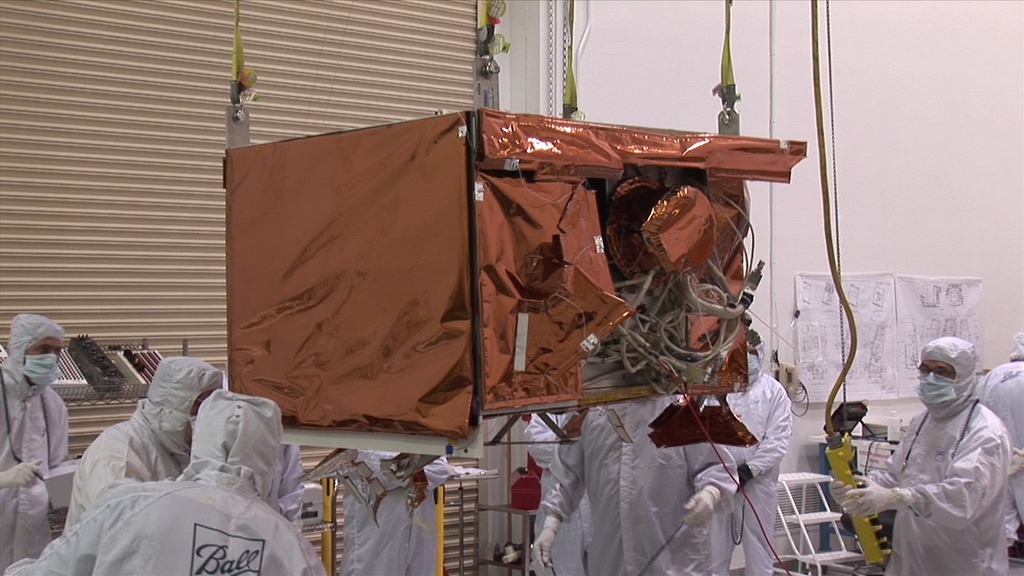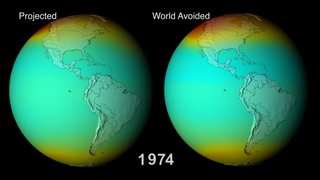A World Without The Montreal Protocol
A week ago marked the 24th anniversary of the signing of the Montreal Protocol, a landmark piece of legislation that began phasing out the production of ozone-depleting chemicals called chlorofluorocarbons (CFCs). These chemicals, also known by the trade name Freon, were common refrigerants and widely used in aerosol spray cans prior to the Montreal Protocol. In recent years, scientists have been using cutting-edge computer models of the atmosphere to ask a fascinating question: What would have happened to the ozone layer if nations had done nothing to limit the release of CFCs? The impact of inaction, the modeling shows, would have been ominous: increased rates of cancer, cataracts, and immune deficiency diseases are just a few of the consequences. By 2065, global ozone levels would drop to less than 110 Dobson units—a measure of the amount of ozone between the surface and space. (A healthy Dobson unit reading over Antarctica is around 275.) "We wouldn't be able to go out much at all," says NASA scientist Paul Newman. In the visualization below, watch how ozone levels change in two simulated versions of the future: one where CFCs have been regulated, and one where they have not.

Scientists have simulated what the ozone hole would look like in 2065 had chlorofluorocarbons (CFCs) never been regulated.
NASA scientist Paul Newman talks about what would have happened to the ozone layer if the world had not agreed to the Montreal Protocol.
In October, NASA plans to launch a satellite named NPP. A new ozone-monitoring instrument, OMPS, will be on board.

Three oxygen atoms bonded together make up a molecule of ozone.
Credits
Please give credit for this item to:
NASA's Goddard Space Flight Center
-
Animators
- Trent L. Schindler (USRA)
- Lori Perkins (NASA/GSFC)
- Ryan Zuber (UMBC)
- Walt Feimer (HTSI)
-
Producers
- Jefferson Beck (USRA)
- Silvia Stoyanova (USRA)
-
Scientist
- Paul Newman (NASA/GSFC)
-
Videographer
- Rob Andreoli (Advocates in Manpower Management, Inc.)
-
Writer
- Alison Schuyler Ogden (NASA/GSFC)
Release date
This page was originally published on Thursday, September 22, 2011.
This page was last updated on Wednesday, May 3, 2023 at 1:53 PM EDT.

